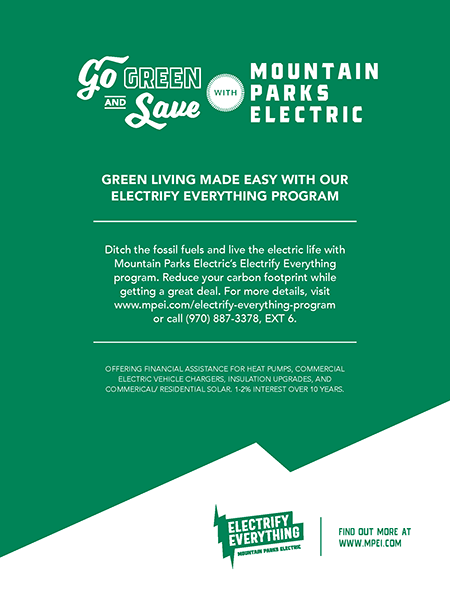
Marketing
Why It Matters
Research from on-the-ground programs show marketing can be the single biggest ingredient for program success. Who are your customers? What do they need? How will your customers hear about your new program? Who do they trust? What are your channels for reaching them already? What partners might join you in sharing this new program?
Program Marketing
What is the target market for your beneficial electrification program? Often, these programs target high energy users or customers with high bill complaints because they will benefit the most from energy improvements, even if the measures have a high initial cost. Some programs identify participants through more detailed research about their local market.
Marketing efforts should be in line with program penetration goals. How many customers are you trying to reach and how many are you aiming to activate? Depending on the scale of your program, you may want to come up with a catchy program name and logo. Most programs benefit from promotional materials of some kind describing the program.
Marketing and improving customer awareness are key to any utility incentive program. This becomes especially true for beneficial electrification programs because consumers are being asked to convert to a different technology, rather than updating their current system. Many consumers are going to be naturally skeptical or uncomfortable about a switch. How much will it cost? Will it function properly? Will they like it? How will you effectively answer all of these questions?
Channels
Bill inserts, social media engagement, and articles in the co-op/utility newsletter or magazine are all common and affordable ways to market beneficial electrification programs. Radio, web, and print advertisements can be effective at reaching ratepayers. Contractor networks can be particularly effective in marketing a program; some programs have found success by developing a program brand in partnership with contractors.
Partnerships
Consider how the people in your region generally receive their news and information. There are many channels to utilize and natural partnerships to create. Thinking creatively about how stakeholders can help inform and spread a program can make lighter work of marketing.
Partnering with trusted community-based organizations—such as schools, churches, and local nonprofits—can also be an effective way to promote your program. Local newspapers are often willing to do an article about the launch of your program too. Are there annual events that the utility can sponsor or participate in? Word-of-mouth and customer-to-customer promotion of programs are some of the best and most cost-effective ways to promote a program.
Marketing In The Field: Outreach to Agricultural Customers
Learn about how Delware Electric Cooperative worked with member-farmers to help them switch to electric irrigation.
Utility-led outreach will drive beneficial electrification program participation and success. With so many different types of electrification opportunities across various farm operations, two-way communication will be important to best understand the needs of each farm. Most electrification upgrades will require large investments in critical operations, so building trust and being mindful of farmers’ concerns will be key. Beyond direct communication, utilities can sponsor or host demonstrations or other events. Utilities can also look to develop partnerships with key third parties, such as agriculture extension programs at state universities.
Simple, short explainer videos can help generate interest and education in a utility’s program
Online videos, both developed in-house and pulled from the web, can go a long way. These clips can showcase successful projects and better explain your new program to customers. It can be very helpful to illustrate key concepts around beneficial electrification, like load management and how it advantages both the utility and end-user alike. The strength of the utility/customer relationship drives the possibilities and success of all beneficial electrification programs, and agricultural customers are no different.
Utility EV Education Campaign
Chevy SilveradoE. Photo Credit: Chevrolet
Informing your area about exciting news and information regarding the electric vehicle revolution can help spread crucial awareness about transformation electrification. Utilities can utilize various platforms including the utility’s website, newsletters, and bill inserts to share information.
EV Newsletter: An EV newsletter is a great way to get the word out to customers about what’s happening in the EV world.
Bill Inserts: Customers see the utility as a trusted source of information. Each month the utility has an opportunity to share the benefits of going electric.
Promotional Events: Ride and Drive events are an important tool the utility can deploy to help demonstrate the benefits of EVs to customers. Ride and Drives can also provide the opportunity for the utility to build relationships with commercial dealers and perhaps further incentivize sales. Consider offering dedicated EV training for utility and municipal staff.
Web Promotion of EVs: The utility can harness its own website and social media channels to help customers understand the benefits of electric transportation and support their potential vehicle purchases.
Relationship building is important in order to engage important community stakeholders. An important group for utilities to engage are existing EV owners in the service territory. They will have important insights on the longer-term benefits of EV driving, charging options and strategies, and ways the utility can help ease individual customers’ electric transition. Local EV owners can be especially helpful by serving as EV ambassadors at utility-hosted events.
It is just as important to get the word out to fleet operators as it is to general consumers. Many of the same strategies are useful, just with minor tweaks. For example, bring in an electric school bus to host a ride and drive for school district administrators, drivers, parents, and students. Experiencing benefits in person is the most powerful way to dispel myths surrounding EVs and excite large customers and the people it will directly benefit. Similar demonstrations with electric medium-duty trucks, forklifts, tractors, and more can be transformational to encourage electrification.
Similar to consumer electric vehicle owners being great “EVangelists,” existing electric fleet owners are an important group for the utility to engage with. They can help share experiences with their peers, both positive and negative to help guide other fleets Check with your state energy office or regional Clean Air Agency for any information on groups who are doing this in your region. In Washington state, for example, WSU Energy organizes a group for fleet owners to learn from one another. Local EV fleet owners can be helpful when organizing a commercial vehicle Ride and Drive, to perhaps bring vehicles for fleet owners and operators to ride in or simply for show and tell. This can add a lot of value to commercial Ride and Drive events in rural areas.




